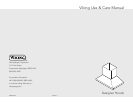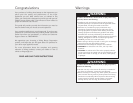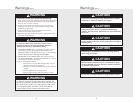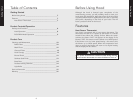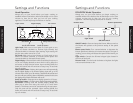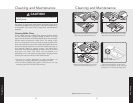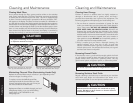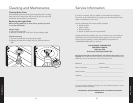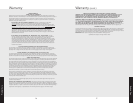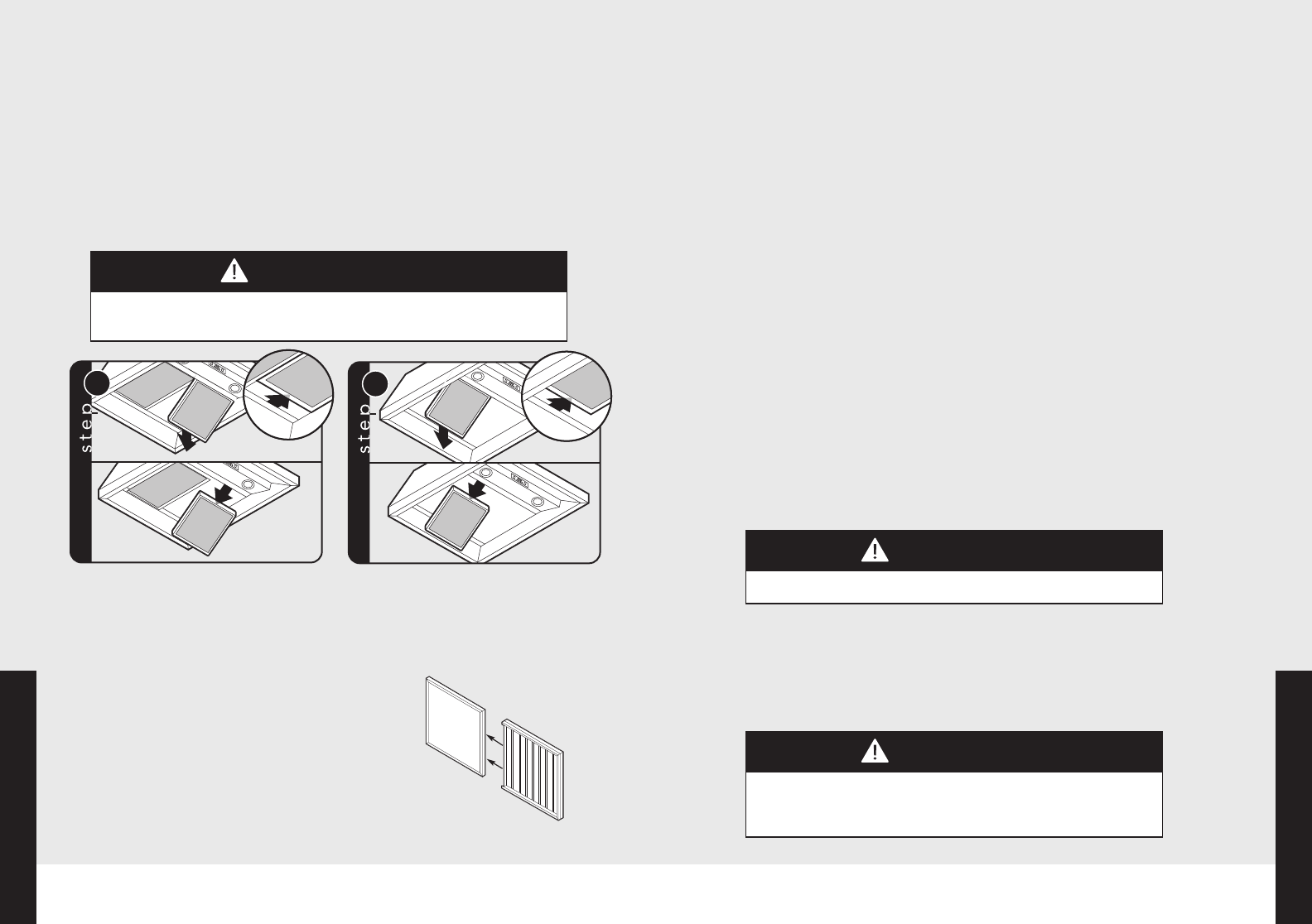
13
Product Care
12
Product Care
Cleaning and Maintenance
Cleaning Mesh Filters
As air passes through the filter, grease particles collect on the stainless
steel screen inside the filter. The filters should be examined periodically
to assure that all surfaces and parts are clean. This unit is equipped with
an alarm. Once the unit has been in operation for 48 hours, the letters “FILT”
will appear on the display. The filters can then be washed in a dishwasher or
in a sink with hot, soapy water. Simple periodic cleaning will ensure maximum
effectiveness. Do not use caustic detergent to clean the filters. An abrasive or
corrosive cleaner may damage the finish. Do not take the filters apart to clean
them. It is not necessary and will void the filter warranty. Once the filters have
been cleaned and placed back in the hood, the display is canceled by
holding the scroll up (+) and the scroll down (-) buttons for 5 seconds.
Maintaining Charcoal Filter (Recirculating Hoods Only)
Replace the charcoal filters every 6 months to 1 year depending on the
amount and type of cooking you do.
To replace, remove the baffle/charcoal filter
assembly and slide the charcoal filter out of the
channel and replace with a new one. Do not put
the charcoal filters in the dishwasher.
Replacement filters are available through your local
Viking Range dealer, or you can call the Viking
Online Store at 1-877-834-8222 or visit
vikingrange.com
CAUTION
For general ventilating use only. DO NOT use to exhaust hazardous
or explosive materials and vapors.
3
2
1
1
3
2
1
2
Slide filter front over front lip. Push filter
rear up, then slide back over rear lip.
Slide filter front over front lip. Push filter
rear up, then slide back over rear lip.
Cleaning and Maintenance
Cleaning Hood Canopy
Finishes in enamel or stainless steel are highly resistant to
damage or discoloration due to grease, steam, and heat—
provided that reasonable care is given to the equipment. The
following suggestions will help keep your hood looking new.
1. Do not allow an excessive accumulation of grease. For best
results, you should wipe your hood clean with a cloth dipped in
warm, soapy water. DO NOT USE ABRASIVE CLEANSERS,
STEEL WOOL PADS, OR ABRASIVE CLOTHS. DO NOT use
cleansers that contain chlorides; the chlorides in the cleaner
could damage the stainless steel finish. If you need to scrape
stainless steel to remove encrusted materials, first soak the area
with hot towels to loosen the material, then use a wooden or
nylon spatula or scraper. DO NOT use a metal knife, spatula, or
any other metal tool to scrape stainless steel.
2. Every 3 months give your hood a thorough cleaning. On
painted surfaces, use a new coat of wax. A good wax
cleaner—available at either a grocery or hardware store—will
do both jobs at once. On stainless steel surfaces, use a good
stainless steel cleaner and polish.
Renewing Enamel Finish
If discoloration occurs, you should thoroughly polish the finish
on your hood to renew its gloss and luster and to remove any
grease residue which may have a yellowing effect. Use any
good enamel polish, refrigerator polish, or automotive polish.
Renewing Stainless Steel Finish
Regular cleaning is the best way to assure that your stainless
steel finish stays bright and unscratched. Use lemon oil or
stainless steel polish to coat and protect stainless steel.
CAUTION
All brass special ordered parts are coated with an epoxy
coating. DO NOT use brass cleaners or abrasive cleansers
on the brass option parts.
CAUTION
Do not use a porcelain cleaner or rough abrasive cleaner.



